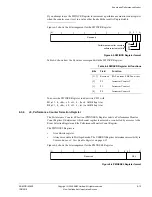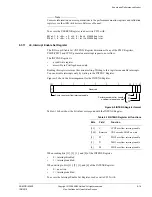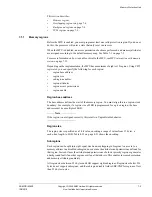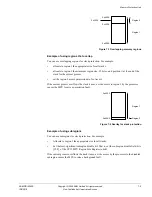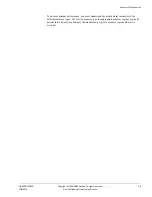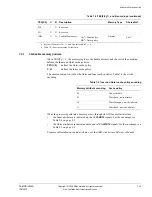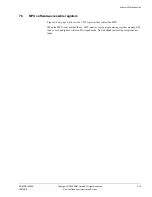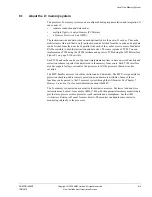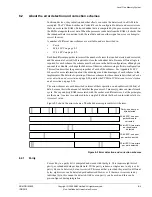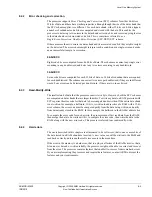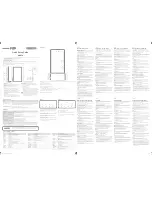
Memory Protection Unit
ARM DDI 0363E
Copyright © 2009 ARM Limited. All rights reserved.
7-4
ID013010
Non-Confidential, Unrestricted Access
Region attributes
Each region has a number of attributes associated with it. These control how a memory access
is performed when the processor accesses an address that falls within a given region. The
attributes are:
•
Memory Type, one of:
—
Strongly Ordered
—
Device
—
Normal
•
Shared or Non-shared
•
Non-cacheable
•
Write-through Cacheable
•
Write-back Cacheable
•
Read allocation
•
Write allocation.
See
Memory types
on page 7-7 for more information about memory types, and
Region attributes
on page 7-9 for a description of how to assign types and attributes to a region.
Region access permissions
Each region can be given no access, read-only access, or read/write access permissions for
Privileged or all modes. In addition, each region can be marked as
eXecute Never
(XN) to
prevent instructions being fetched from that region.
For example, if a User mode application attempts to access a
Privileged mode access only
region
a permission fault occurs.
The ARM architecture uses constants known as
inline literals
to perform address calculations.
The assembler and compiler automatically generate these constants and they are stored inline
with the instruction code. To ensure correct operation, only a memory region that has permission
for data read access can execute instructions. For more information, see the
ARM Architecture
Reference Manual
. For information about how to program access permissions, see Table 4-34
on page 4-52.
Instructions cannot be executed from regions with Device or Strongly-Ordered memory type
attributes. The processor treats such regions as if they have XN permissions.
7.1.2
Overlapping regions
You can program the MPU with two or more overlapping regions. For overlapping regions, a
fixed priority scheme determines attributes and permissions for memory access to the
overlapping region. Attributes and permissions for region 11 take highest priority, those for
region 0 take lowest priority. For example:
Region 2
Is 4KB in size, starting from address
0x3000
. Privileged mode has full
access, and User mode has read-only access.
Region 1
Is 16KB in size, starting from address
0x0000
. Both Privileged and User
modes have full access.
When the processor performs a data write to address
0x3010
while in User mode, the address
falls into both region 1 and region 2, as Figure 7-1 on page 7-5 shows. Because these regions
have different permissions, the permissions associated with region 2 are applied. Because User
mode is read access only for this region, a permission fault occurs, causing a data abort.




